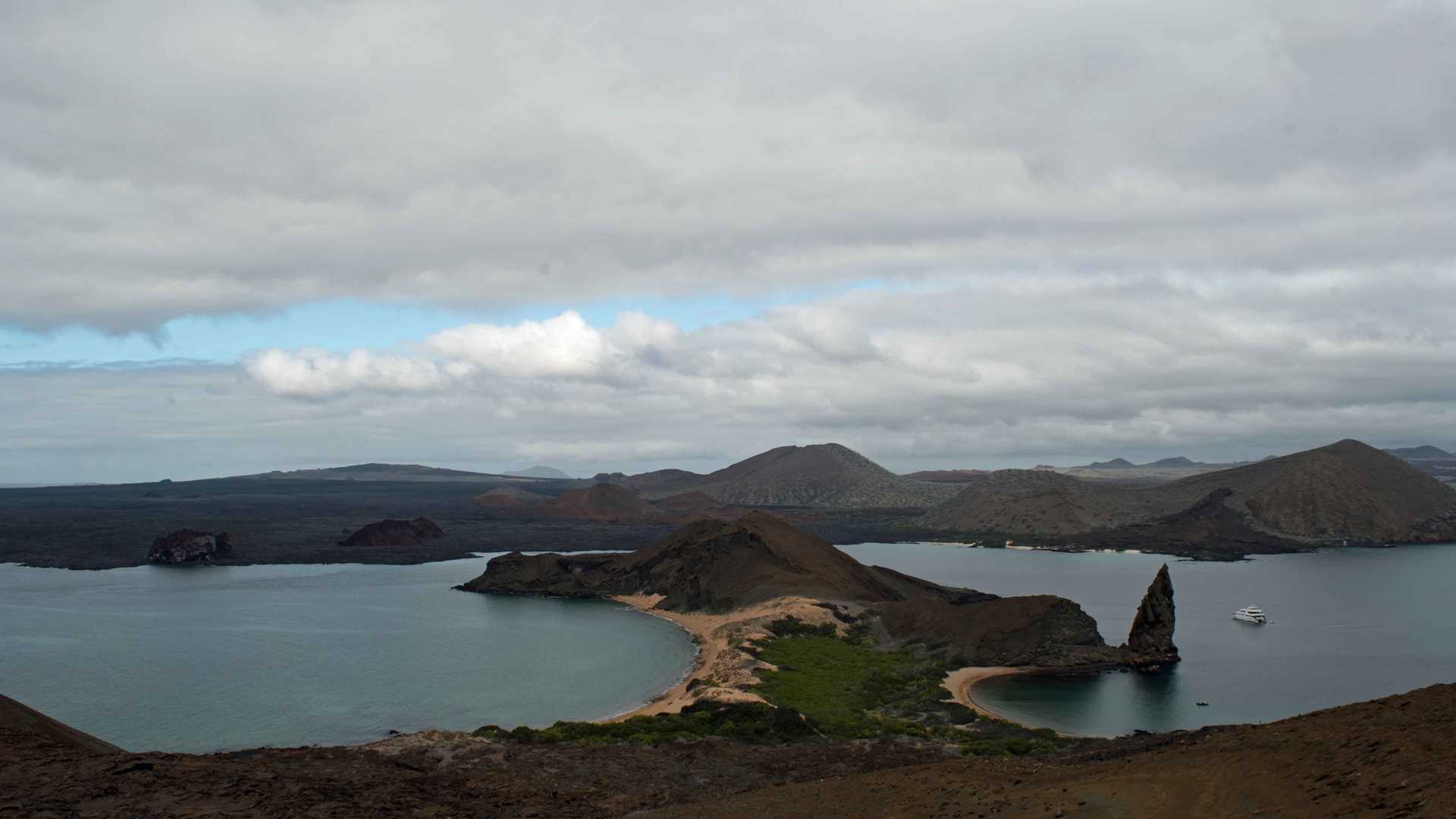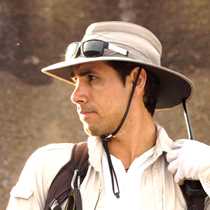Today, we woke up at a typical “dry season day”; overcast with some chilly breeze in the early morning, later turned out to be a sunny and bright day, with pleasant air and cold sea temperatures. First on our schedule of the day was a hike to the summit of Bartolome at 8:00 am, after enjoying breakfast to recharge our energies. Bartolome is a small island located off the eastern coast of Santiago, it holds over 100 craters of various sizes, as well as the most famous landmark of the Galapagos: the Pinnacle Rock. A walk board and then over 345 wooden steps led us to the top of Bartolome, from which the views of the lava fields of the island and the surrounding coasts were astonishing. It is a great place for the interpretation of the geology of Galapagos, how it did form few millions of years ago, and how happened the appearance of the first beings that came to colonize the islands.
Then later we went into the blue waters to explore the very rich underwater world by snorkeling in the nearby shore. The place is extremely rich, with large schools of various species of fish, some of them colorful, others not as much, but the abundance is fantastic. We could mention the Razor surgeonfish, Cortez rainbow wrasses, pink cardinal fish, sergeant majors and the beautiful blue-chin parrotfish. Various kinds of Sea stars we saw here, like the Panamic cushion and the chocolate chip sea star, always a favorite because of its appealing name and shape. The highlights of our morning in the water were to find a juvenile sea lion eating on a razor fish, the cave with few white-tip reef sharks and finally to spend few minutes with a single Galapagos penguin; it was a “National Geographic” moment to see this “water flying creature” to get some of the sardines at a very fast speed.
In the afternoon, we had another destination to explore. The National Geographic Endeavour II navigated further south along the Santiago Island coast to reach a group of small islets. One of them is Sombrero Chino, named after the peculiar shape it has which resembles a traditional Chinese hat. The sea separates this islet from the Santiago coast by a narrow channel with turquoise and calm waters. Many of our guests took another opportunity to snorkel here, and with relatively clear waters; they had close encounters with many fish species, and even spotted eagle rays and white-tipped reef sharks. Towards the end of the afternoon, we returned to this same area this time to look for more wildlife and a beautiful moonscape that surrounds the area. Many types of volcanic formations are seen here, lava flows, and few candelabra cacti, as every day the sea lions are being friendly and playful with us, swimming close to our zodiacs. In our way back to our ship The sun set was gorgeous, it spread its beautiful yellow light on the nearby coast, islets and islands… we felt the peace of this magic place around us.









